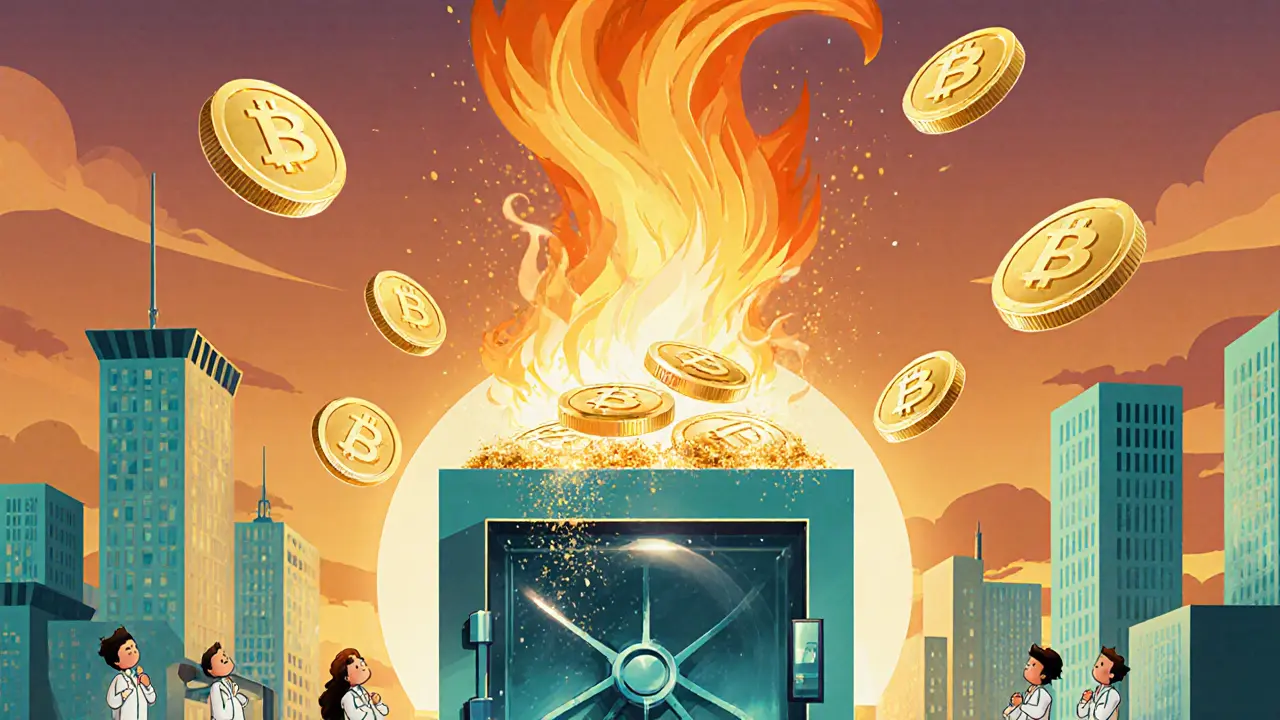Smart Contract Burn: How Token Burning Impacts Crypto Value
When working with smart contract burn, a programmed function that permanently removes tokens from total supply. Also known as token burn, it helps control inflation and can boost scarcity. The idea is simple: a piece of code tells the blockchain to send tokens to an unrecoverable address, effectively "destroying" them. This process is recorded on-chain, so anyone can verify that the supply actually shrank. smart contract burn is a core tool for projects that want to manage their economics without relying on external actors.
Key Elements and Related Concepts
One of the most common implementations is the token burn mechanism found in ERC‑20 contracts. Developers add a burn function that lets holders or the project itself call burn() to reduce the balance. When a deflationary token includes regular burns—like a 2% fee on each transfer that gets sent to a burn wallet—the circulating supply continuously contracts. This creates a feedback loop: fewer tokens can mean higher price pressure, especially if demand stays steady. Many projects tie burns to milestones, such as reaching a certain market cap or completing a product update, turning the burn into a narrative that excites the community.
From an investor’s perspective, understanding the three main attributes of a burn helps gauge its impact. First, the burn rate—how many tokens are removed per event—determines the speed of supply reduction. Second, the visibility of the burn, ensured by on‑chain transparency, builds trust. Third, the purpose behind the burn, whether it’s to fund development, reward holders, or simply limit inflation, shapes market perception. For example, a project that burns a fixed percentage of fees aligns holder interests with network growth, while a one‑time token‑supply reduction after a fundraising round may signal a shift in governance. Linking these attributes to real‑world outcomes—like price spikes after a high‑profile burn announcement—shows how the mechanic moves from code to market sentiment.
Looking ahead, the rise of layered solutions like rollups and cross‑chain bridges adds new dimensions to burning. A burn on an L2 can affect the parent chain’s tokenomics, and cross‑chain burns may require coordinated smart contracts to ensure consistency. This complexity underscores why developers need to design burns with clear specifications, audit trails, and community communication. Whether you’re a trader spotting a potential price catalyst or a developer planning a sustainable token model, grasping the mechanics of smart contract burns equips you to navigate the ever‑evolving crypto landscape.
Below you’ll find a curated set of articles that dive deeper into specific burn implementations, case studies of deflationary tokens, and practical guides on how to audit a burn function. Each piece adds a piece to the puzzle, helping you see how smart contract burns shape supply, demand, and ultimately, value.
Understanding Token Burning: Mechanisms, Implementation, and Best Practices
Learn what token burning is, explore the main burn mechanisms, see how to implement them safely with smart contracts, and avoid common pitfalls.
